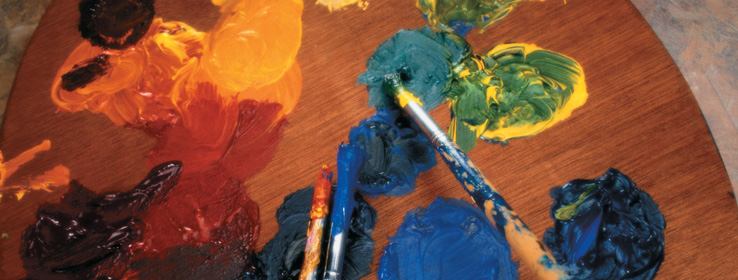Designers share their strategies for identifying clients' most deeply felt attitudes about color and expanding their comfort zones.
In her former career as a stockbroker, Ruth Jansson learned the secret of successful selling. It's not about talking – it's about listening, "really listening," says the Washington, D.C.-based senior designer and color specialist with Gensler Architecture, Design and Planning Worldwide.
What clients say about color is crucial, but so are their nonverbal cues, such as the colors they choose to wear, and their facial expressions and body language when they're reacting to color.
Idea 1: Eye Candy.
"You have to read between the lines," Jansson says. "People say one thing and may mean something different. Color is all about emotions, and a palette can kill a whole design."
To gauge clients' emotional reaction to colors, Jansson assembles "concept palettes" – objects that illustrate colors but aren't the "real" swatches that she'd actually recommend. Instead she might include a silk scarf, a piece of jewelry or a seashell. "Eye candy, I call it," she says.
As clients handle the objects, they often reveal reactions that they wouldn't otherwise express.
Idea 2: Field Trip.
For many residential clients, deciding to take the color plunge is "like bungee-jumping," says Todd Craig, designer with TR Craig Inc. of Minneapolis, Minn. They want to try something different or daring, but they're nervous.
"It's not so much selling people on color but easing their fears about color and helping them understand how they'll feel when they commit to it," Craig says. Especially if the color value is deeper than what they're used to, "they worry about how the room will feel – whether it will be too dark, too cave-like." To help clients "feel" color, Craig encourages them to take field trips to commercial buildings painted in similar hues, where they can experience what it's like to be surrounded by deeper color. "Restaurants are always good examples."
Idea 3: Supersize.
Charlotte Hangorsky, designer with CH Design in Philadelphia, Pa., often coaxes her residential clients to go a shade deeper than the hue they first choose. "The white lines around the colors in the fan deck make them look darker and more saturated than they truly are," she says. To help her clients visualize colors in their rooms, Hangorsky requests 8 1/2-by-11-inch samples from Sherwin-Williams. "They ship in a day, and they're much better than looking at a tiny chip."
Idea 4: Art Works.
Jansson sometimes uses visual aids from the art world to help illustrate and sell a palette. While working on a hotel in Seoul, South Korea, a few years ago, she received only a few words of direction: outdoor, California and happy. That triggered thoughts of California abstract-artist Richard Diebenkorn. Jansson created a palette based on colors used by Diebenkorn and showed her client a series of his paintings to help close the deal. "Art helps clients visualize those colors together – and also validates them," she says.








